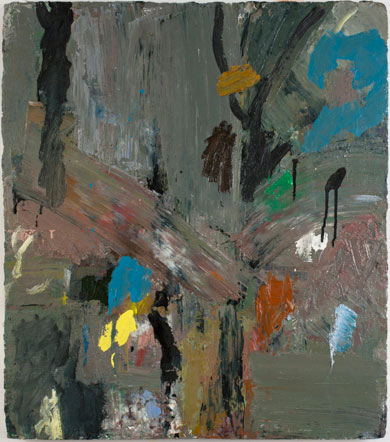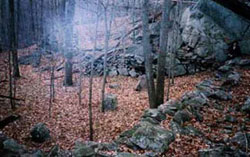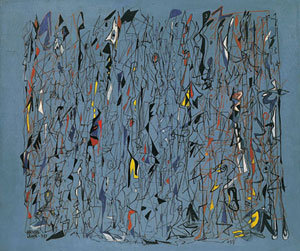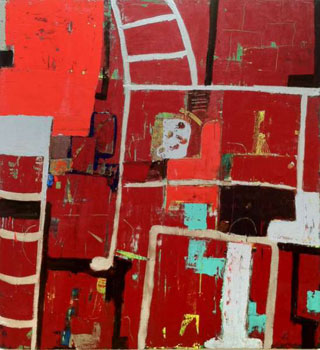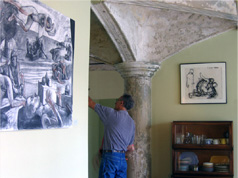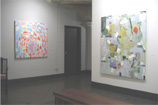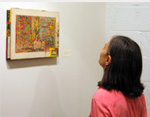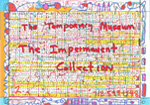
|
|
|
|||||||||
| ||||||||||
Larry was recommended to me when I was organizing a show of paintings of trees, which is slightly odd since he is an abstract painter. I liked his work so much I saw a tree in this one. In fact, it particularly reminds me of the point where you turn on to the Taconic from the Sawmill Parkway going north, with an intimation of a later stretch of the Taconic where the median is a wooded area. |
||||||||||
|
||||||||||
Two things written about Larry’s work offer food for thought. The first is in a catalog essay by Kristina Olson: “He brings every painting to a resolution, refusing to have any failures.” My first response on reading this was, “Doesn’t everyone try to resolve each painting? And doesn’t everyone have some paintings that fail?” But I think I know what she means: It is that Larry will wrestle with each painting, there will be no preordained image in mind and he will scrape it off and start over if the painting does not “succeed.” Why and how the painter or viewer perceive paintings as succeeding or failing is a never-ending discussion. I also read a review of Larry’s work once that criticized him (I paraphrase) as never having graduated from the New York School. I can’t think of which ab-ex painter might have painted anything that looks remotely like this painting, but this brings up a question too—did the abstract expressionists invent a style or did they invent a method of searching for a painting that could be more fully explored? Larry does use the method but he doesn’t use it to search for a recognizable style, as many of the NY School did. Jack Tworkov said, “I don’t paint Tworkovs”—that avowal applies to Larry. (This is a problematic area for painters—how recognizable should your style be? Is it all about finding a signature subject, too? And never changing it?) The real connection is jazz and other forms of improvisation in music. His approach is strict in that way, from, as he puts it, “the moment I start to gesso the canvas.” Personally, I long to be able to really listen to instrumental jazz and classical music, but I always seem to be listening to one phrase, missing the next and getting totally lost. A painting is a place where time stops and I can look at one part as long as I like to, without missing anything else. That is particularly interesting in a painting like this which has an element of time; it is a record of the sequence of actions that the painter made. In Chicago recently I happened to discover a lesser known ab-ex painter, Norman Lewis, who Larry does seem to have something in common with, and this is a quote from an oral history interview Lewis did in 1968: ...and that painting, like music, had something inherent in itself which I had to discover and which has nothing to do with what exists, it has another kind of reality, that which is inherent in painting in those four sides; in sculpture which is around. So that with this kind of awareness naturally you really get with yourself and you wonder what can I say, what do I have to say that can be of any value, what can I say that can arouse someone to look at and feel awed about. |
||||||||||
|
||||||||||
| TWILIGHT SOUNDS, Norman Lewis, 1947, 23.5" X 28", oil on canvas | ||||||||||
Here's a more recent painting of Larry's: |
||||||||||
|
||||||||||
| MUSICAL CHAIRS, 2011, 78" x 70", oil on linen | ||||||||||
| To see more of Larry Webb's work on his website | ||||||||||
| Forward to the first painting in the collection | ||||||||||
| Back to the My Collection home page | ||||||||||
